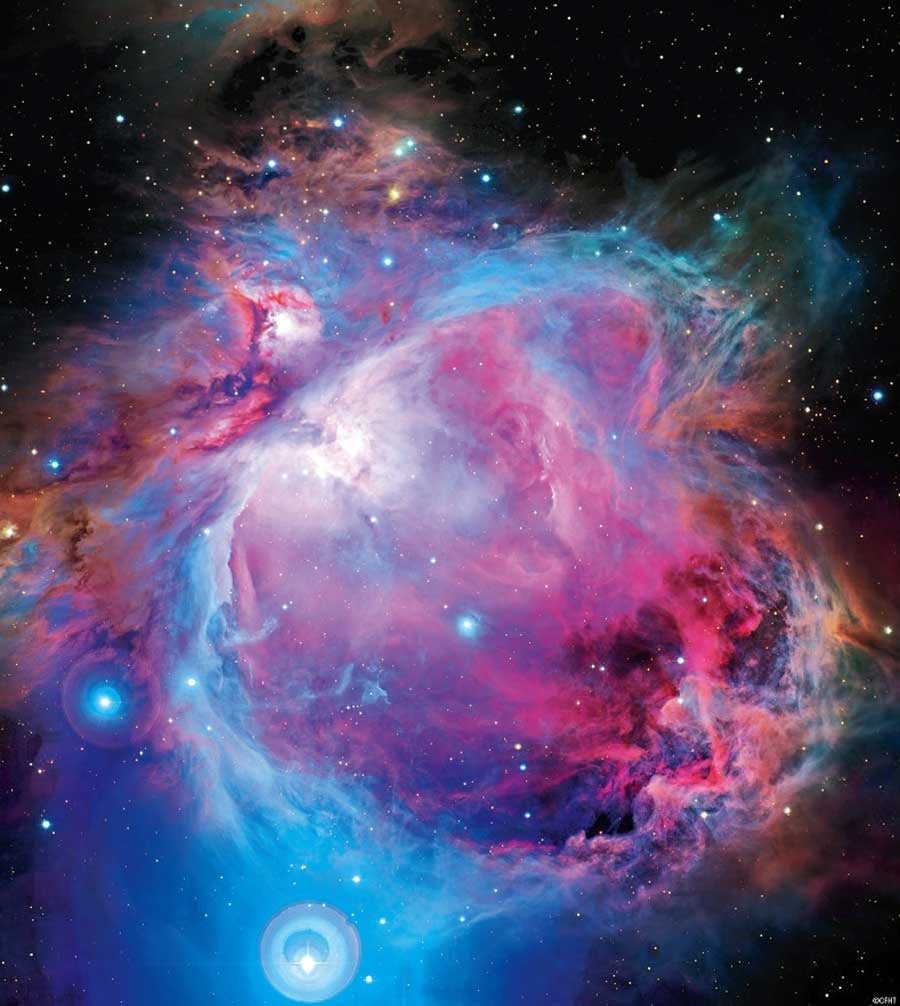Researchers recently used data from the Nobeyama Radio Observatory (NRO) telescope and the Combined Array for Research in Millimeter Astronomy (CARMA) to create the most detailed star map of the Orion A molecular cloud to date.
Being able to closely observe other celestial residents, both near and far, helps astronomers understand the formation and evolution of our mysterious universe, and it’s no secret that advanced telescopes are largely responsible for the significant surge in stellar discoveries. A recent example of these advancements involved the use of high-tech telescopic data to create a meticulous map of our energetic, star-bearing neighbor — the Orion A molecular cloud.
Orion A sits about 1,200 light-years from Earth and is the closest region to us that rapidly forms high-mass stars. The molecular cloud houses compact star clusters similar to the one our Sun likely formed in, meaning the Orion A molecular cloud contains a stellar population rich in Sun-like stars. To help investigate this stellar breeding ground, a Yale-led team of researchers observed Orion A to create the most comprehensive map of the star-forming molecular cloud to date. Their paper was recently accepted by the Astrophysical Journal Supplement.
“Our maps probe a wide range of physical scales needed to study how stars form in molecular clouds, and how young stars impact their parent cloud,” said Shuo Kong, a postdoctoral associate at Yale and lead author of the paper, in a press release.
To collect the data needed for such a detailed map, the researchers utilized both the Nobeyama Radio Observatory (NRO) telescope in Japan and the now-defunct Combined Array for Research in Millimeter Astronomy (CARMA) in California, which ceased operations in 2015. CARMA was made up of 23 different telescopes that, when combined, formed a powerful interferometer — which merges signals from separate telescopes to provide higher-resolution observations. The maps and datasets stemming from this collaboration became known as the CARMA-NRO Orion Survey.
“Our survey is a unique combination of data from two very different telescopes,” said Jesse Feddersen, a Yale graduate student and co-author of the study. “We have combined the zoom of CARMA with the wide-angle of NRO to simultaneously capture the details of individual forming stars and the overall shape and motions of the giant molecular cloud.”
In addition to using the map to study the formation and evolution of the stars within Orion A, astronomers will also be able to use the data to create models of distant galaxies. With solid understanding of how stars form and evolve within Orion A, researchers can predict the stellar patterns of other molecular clouds by applying the existing model.
“The data we provide here will benefit research on a broad range of evolutionary stages of the star formation process and on the environment stars form,” said Héctor Arce, an astronomy professor at Yale and the group’s principle investigator.
Peering into the Orion A molecular cloud gives us a glimpse into the life of our close celestial neighbor and helps us understand how Sun-like stars form in our neck of the woods. For now, it will also give astronomers insights into how stars form and evolve in galaxies much farther from home, but with NASA’s recent launch of the Transiting Exoplanet Survey Satellite (TESS) and the 2020 launch of the James Webb Space Telescope, it might not be long until we get to observe them up close and personal.










